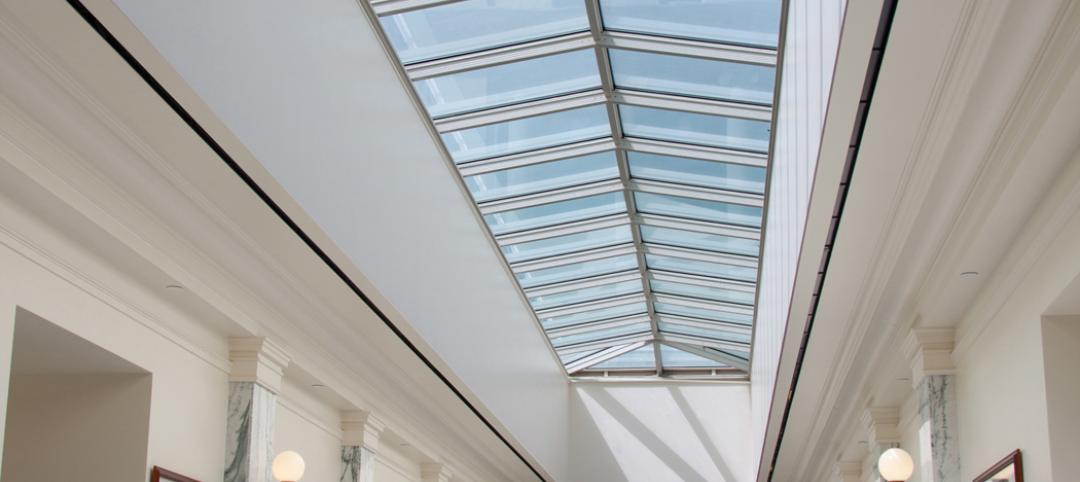Since last December 14, safety has become the paramount concern of every school official and school board member in this country. December 14, 2012, was the date on which 20-year-old Adam Lanza shot and killed 20 children and six adult staff members at Sandy Hook Elementary School, in Newtown, Conn. It was the second deadliest mass shooting by a single person in U.S. history, after the Virginia Tech tragedy of 2007.
Sandy Hook galvanized school officials, parents, public officials, and police departments, as they scrambled to figure out how to prevent a similar incident in their communities. Many asked: Could better design and construction of schools—preschool, elementary, and secondary—prevent or at least mitigate the casualty rate at another Sandy Hook? And could this be done not only for schools to be built in the future, where Building Teams would be working from a blank slate, but for the tens of thousands of extant schools from Maine to Hawaii, where physical conditions are often literally set in stone?
TOP K-12 SCHOOL SECTOR ARCHITECTURE FIRMS
2012 K-12 Revenue ($)1 DLR Group $38,250,0002 SHW Group $32,328,8433 PBK $31,760,0004 IBI Group $27,977,8605 HMC Architects $25,407,1646 Stantec $21,586,2097 Fanning/Howey Associates $20,247,0008 Perkins+Will $19,938,2119 Heery International $16,561,30310 LPA $14,438,017
TOP K-12 SCHOOL SECTOR ENGINEERING FIRMS
2012 K-12 Revenue ($)1 AECOM Technology Corp. $100,150,0002 URS Corp. $55,927,7783 STV $45,937,0004 Jacobs Engineering Group $36,550,0005 Parsons Brinckerhoff $19,100,0006 TTG $9,985,3007 Shive-Hattery $7,379,4258 BRPH $4,900,0009 KCI Technologies $4,200,00010 Dewberry $3,852,971
TOP K-12 SCHOOL SECTOR CONSTRUCTION FIRMS
2012 K-12 Revenue ($)1 Gilbane $947,077,0002 Balfour Beatty $483,944,4763 Turner Corporation, The $357,910,0004 CORE Construction Group $284,198,3755 Skanska USA $273,418,3516 McCarthy Holdings $260,000,0007 Kraus-Anderson Construction $211,000,0008 JE Dunn Construction $169,860,4369 Consigli Construction $148,883,46810 Barton Malow $139,236,049
These questions inspired a gathering of public officials, school designers and contractors, safety experts, and facility directors convened last February in Washington, D.C., by the Council of Educational Facilities Planners International. The daylong CEFPI Security Summit provided a framework in which to consider what school districts can do to provide a safer environment for children, teachers, and administrative staff. Following are the recommendations of immediate interest to the design and construction community.
Infrastructure needs beefing up, says CEFPI report
Emergency preparedness and response must be woven into the very fabric of school life, according to the CEFPI Security Summit report. The report recommends creating “concentric circles of protection” through the following means:
- Providing the ability to lock students behind doors to protect them from aggression (door hardware companies report that they cannot keep up with demand for lock systems since Sandy Hook)
- Shielding students from large windows
- Safeguarding children when they meet in large groups for meals and assemblies
- Installing high-security keying systems with control measures in place for master keys
- Securing children, teachers, and staff via secured vestibules and remote access to select exterior and interior doors (through keyless entry systems)
- Eliminating access to unauthorized persons by improving line-of-sight conditions and installing CCTV cameras
- Protecting entrances through the use of bollards and safeguarding the exterior and perimeter—including playgrounds, athletic fields, and parking lots—via upgraded lighting and camera monitoring
Mass notifiation high on school districts' agenda
The CEFPI report also recommends action on crisis communications, notably:
- Providing an effective public address system, with a backup power source
- Use of multiple communications devices, including mobile panic devices worn by key administrators
- Installation of security cameras and use of emergency radio channels
School districts are already acting. Plainfield District 202, the fourth-largest school district in Illinois, just ordered $180,000 worth of wireless alarm systems for its 30 schools.
As the fall term approaches, design and construction firms, as well as manufacturers of safety products and systems, will be called upon to safeguard the nation’s schoolchildren even more vigorously than in the past.
Read BD+C's full Giants 300 Report
Related Stories
| Jan 16, 2012
Suffolk completes construction on progressive operating suite
5,700 square-foot operating suite to be test bed for next generation of imaged-guided operating techniques.
| Jan 15, 2012
Hollister Construction Services oversees interior office fit-out for Harding Loevner
The work includes constructing open space areas, new conference, trading and training rooms, along with multiple kitchenettes.
| Jan 15, 2012
Smith Consulting Architects designs Flower Hill Promenade expansion in Del Mar, Calif.
The $22 million expansion includes a 75,000-square-foot, two-story retail/office building and a 397-car parking structure, along with parking and circulation improvements and new landscaping throughout.
| Jan 15, 2012
535 Madison Avenue achieves LEED Gold certification
Class-A commercial building meets sustainability requirements of LEED Program.
| Jan 12, 2012
CSHQA receives AIA Northwest & Pacific Region Merit Award for Idaho State Capitol restoration
After a century of service, use, and countless modifications which eroded the historical character of the building and grounds, the restoration brought the 200,000-sf building back to its former grandeur by restoring historical elements, preserving existing materials, and rehabilitating spaces for contemporary uses.
| Jan 12, 2012
Stellar earns construction industry's most prestigious safety award
Now widely accepted as the construction industry's standard measure of safety performance, the STEP awards were established in 1989 to evaluate and improve safety practices and recognize outstanding safety efforts.
| Jan 12, 2012
Building independence: New take on female power
Memoir explores historic engineering project, women's empowerment era.
| Jan 12, 2012
3M takes part in Better Buildings Challenge
As a partner in the challenge, 3M has committed to reduce energy use by 25% in 78 of its plants, encompassing nearly 38 million-sf of building space.
| Jan 11, 2012
DOE announces guide for 50% more energy efficient retail buildings
The 50% AEDG series provides a practical approach for designers and builders of retail stores, and other major commercial building types, to achieve 50% energy savings compared to the building energy code used in many parts of the nation.
| Jan 11, 2012
Mortenson starts construction of Rim Rock Wind Project
Renewable energy contractor to build 189-megawatt wind project in Sunburst, Mont.

















